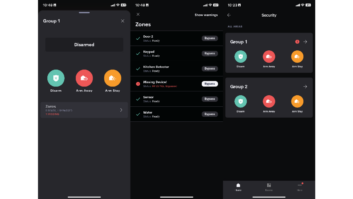
The numerous options available make conference system security a complex business. Following on from Part 1 and Part 2 of this feature, David Davies concludes the seven lessons designed to simplify choosing the right system.
6. System expansion will get even easier.
Wired or wireless, system expansion in the networked era looks set to become even easier with manufacturers consistently emphasising scalability to match the application. “I do not see a problem [with regard to system expansion],” says Thomas Giczy, business development manager installed sound for AKG (pictured above), adding that the company’s CS5 system has a “ring configuration. You open the ring where needed, add or take away units as required, close it again and you are ready to go – without change of any security standards.”
An IP-based approach can also pay dividends. “Using IP as a platform makes our system highly flexible and expandable for the future,” says Lars Van Den Heuvel (pictured), director global product management conference systems, Bosch Security Systems. “From a security aspect here too, access to and from the network can be well managed. The same counts for upgrading the system from, for example, a remote location.” Ultimately, it comes down to “well-managed network security handled by professionals in the IT department”.

Stuart Stephens, systems project engineer, Shure Distribution also highlights the importance of appropriately trained personnel. “The main threats to the security of networked systems are poor implementation of the overall network infrastructure and internal leaks from personnel with security clearance on the systems in question,” he says.
7. New requirements WILL continue to emerge.
The flexibility of IP and wireless means that systems based around these principles will continue to emerge. One implication of more complex systems is that convenience and ease of use will be very highly prized. But new customers will also want to think about issues such as remote participation and its ramifications for security.
“The emerging requirement lies between the growing demand for flexibility of system design like remote participation or site coupling versus the security aspects of these kind of flexible topologies,” says Den Heuvel. “Therefore IP-based systems offer unique advantages as security can be well-managed by standard IT security measures while additional encryption technologies with advanced key management further secure this type of solution.”
Youjie Shao is marketing manager for Gonsin, whose latest solutions for conference include the DCS-1020 Daya Distributed Congress System and large conference system-oriented DCS-2020. Invited to consider the next paradigm shift for conference technology, Shao responds: “From a macro point of view, conference systems will be horizontally expanded from single AV technology to adjacent industries, and will be integrated into large smart platforms such as the Internet of Things and the Smart City. From the micro point of view, conference systems will change from excessive pursuit of unconventional technical innovations to more practical micro-innovations, such as more convenience for disabled people to use the equipment, lower costs in running the equipment, less difficulty in management, and greater ease of installation.”
All of which, it seems fair to surmise, will be keeping R&D teams very busy for many years to come.
The stakes for conference system security can be very high indeed. But there is no mistaking that this is a period of transition: wireless and IP systems are coming through, but some of the technologies involved need to be more clearly explained to overcome the (understandable?) concerns of some end-users. With no shortage of different approaches, potential customers may need to make more exact calculations than ever before about their specific requirements vis-à-vis capacity, expandability and security.
To read the full feature, go to Installation’s July 2014 digital edition.
www.akg.com
www.boschsecurity.com
www.gonsin.com
www.televic-conference.com







